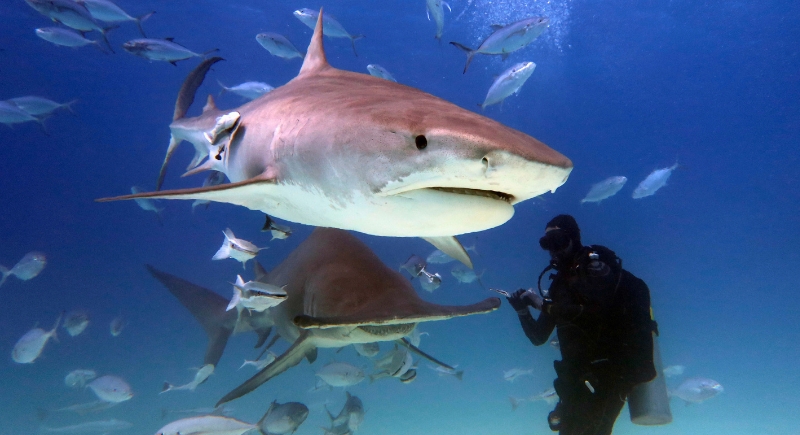Sharks Have a Sixth Sense That You Don’t Have
Sharks move through dark, cloudy water with precision that seems almost supernatural. They don’t rely only on sight or sound to track their prey. Instead, they have a hidden ability that humans completely lack: a built-in detector for faint electric signals. Every heartbeat or twitch in the ocean sends out a tiny current, and sharks can sense it instantly. Beneath the surface, they’re guided by a sixth sense that turns the ocean into a living map of movement and energy.
The Hidden Receptor Network

Image via Wikimedia Commons/Albert kok
Under the skin of sharks lies a remarkable system of tiny jelly-filled tubes, pores, and bulbs collectively known as the Ampullae of Lorenzini. These organs form a dense array across the head, snout, and jaw area of many shark species.
Inside each pore, a jelly-like conductor transfers external voltage gradients to nerve endings. These endings feed into the shark’s nervous system and create a sensor network devoted solely to detecting electric fields. The system isn’t a backup for sight or hearing; it’s a separate modality altogether. It gives sharks a perception that humans lack in everyday life.
What This Sense Can Do
When a creature moves its muscles, tiny electric currents ripple through the water. Sharks pick up on these fluctuations even in darkness or thick murk. In the final phase of the hunt, when all other cues fade, this “sixth sense” springs into action. Some species are so sensitive that they can detect fields as faint as five nanovolts per centimeter.
Beyond tracking prey, this ability may help sharks navigate long migrations by sensing geomagnetic fields or ocean currents carrying electric signals. Basically, sharks can literally feel the electrical heartbeat of their environment while we’re just drifting by.
Because we do not share this sense, our interpretation of shark behavior is often blind to what the shark actually experiences. We see a fin slicing through waves; the shark sees an invisible web of currents, muscle twitches, and live signals.
This has implications for both science and safety. For example, devices that mimic or disrupt electrical fields can affect shark behavior, something diver deterrents already exploit. Understanding this sense also shifts the narrative: sharks aren’t simply “hunt” machines driven by smell or sight; they are wired to detect and respond to one of nature’s hidden channels of information.
Us vs. Them

Image via Getty Images/HQuality Video
We rely on sight, hearing, smell, taste, and touch, five senses built for life on land. Sharks retain those, but add electric-field detection on top. Their sixth sense isn’t mystical or metaphoric; it’s a finely-tuned biological system. Imagine how different life must look if, instead of navigating by light and sound, you sense currents and electric impulses.
That’s how a shark experiences the underwater world. By recognising the gap between our sensory world and theirs, we gain a deeper appreciation of these predators, not just as fearsome, but as evolved, specialized beings.